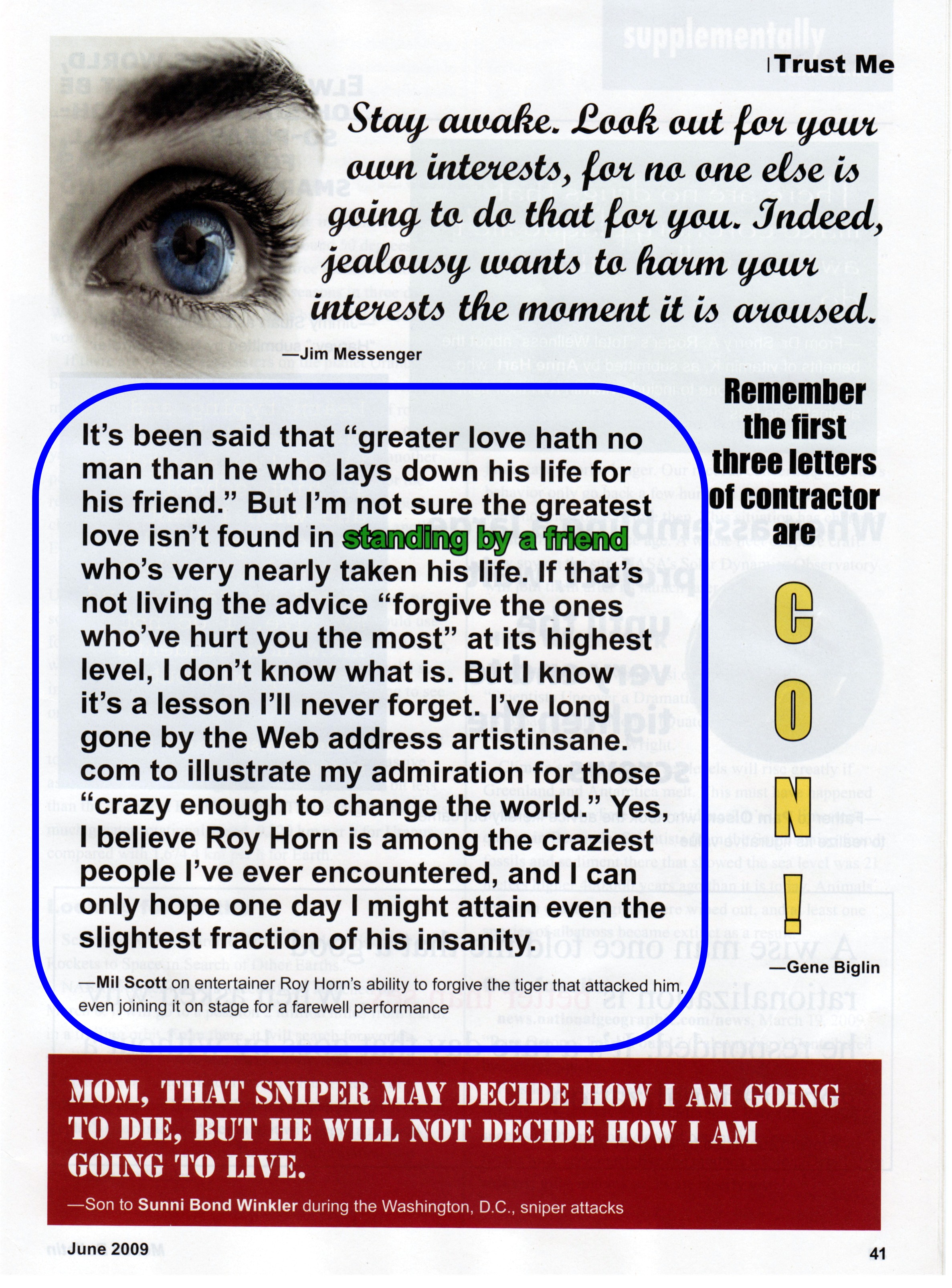

Here's the full article excepted above... (NOTE: A piece on the same topic
appears in the February/March issue of Mil Mania. This is a
completely different article.)
Unforgettable Forgiveness
A few weeks ago
I passed one of those letter boards that appear outside many churches and read
the bold directive, “Forgive the ones who’ve hurt you the most.” Once upon a
time, it would have prompted the thought this was advice most who read the sign
weren’t likely to see followed anytime soon. After all, who precisely in the
modern-day world – wherein legal vindication is sought in response to every
“hurt,” from false accusations of weight gain in a tabloid to being burned by
coffee someone didn’t realize might actually be hot – is really going to act in
such a “divine” manner? The likely answer: nobody.
Having actually seen the advice put into action only
days before, however, the words prompted a very different reaction. For, a
brief article on the internet had led me to a television special about a man who
took this concept so far that, while in the midst of a brutal attack which would
leave him with the most critical of injuries, he cried out not for his own
rescue, but on behalf of his attacker.
That extraordinary man is Roy Horn. Many reading this
probably know him better as the animal trainer half of the duo Siegfried and
Roy; I knew him only as a name from an evening news story in 2003, wherein it
was noted he’d been mauled by one of the exotic cats who served as supporting
players in a spectacle-filled Las Vegas show. Upon reading this internet piece,
however, I quickly hungered to learn more. As a result, I tuned in to the
television special to “meet” this man, and to hear the amazing story I’d
glimpsed in words on a flat web page brought to life through his own
paralysis-impaired speech.
What a story it proved to be. While this article
doesn’t allow room to share the details in depth (you can visit
www.siegfriedandroy.com for more information) it quickly became clear Roy’s
unusual bond with animals started early. And, throughout his years of success
with Siegfried, it flourished and expanded. Footage of Roy romping in a field
with a bevy of white tigers, and swimming amongst them in a pool provide images
of an intimacy between man and beast difficult to grasp. In explanation, Roy
noted he’d been present for every birth, and because his was the first face each
of these creatures saw, and the first voice they heard, it only stood to reason
they believed him one of their own.
Even so, it only stands to reason this unity must have
been shattered when one of these enormous and powerful beings attacked Roy
onstage, leaving him with little chance of survival and the best case scenario
of a very limited recovery. It seemed the doctors who delivered this grim
prognosis, however, knew even less of Roy than I did. Not only did he survive,
in the months that followed he began steadily surpassing every expectation.
Despite the greatest odds, he gradually regained the ability to walk and talk –
and to express his unshakable belief that the tiger who had caused this
devastating harm had, in fact, intended help instead. Roy asserts that he
experienced a small stroke onstage, which the tiger somehow sensed, and in
reaction it immediately attempted to drag him away to safety. Because a human
can’t be carried by the neck like a cub, however, the result was catastrophic.
Yet, even in the midst of this occurrence, Roy’s greatest concern wasn’t for his
own safety, but that the tiger not be hurt.
Still, with five years hindsight into the physical
challenges with which he continues to struggle, surely Roy’s bond with his
massive cats must have eroded – so one would naturally assume. When asked by
the interviewer whether this was the case, however, Roy answered “No,” with such
a calm and certain assurance as to leave no doubt regarding the truth of his
declaration. He acknowledged, of course, the limits his physical condition
placed upon him in terms of interacting with them. But, his trust and respect
for his beloved animal comrades remained unchanged.
The television special went on to show the charity
event for which Siegfried and Roy had emerged from retirement, and the farewell
performance in which it culminated. And just like the show that had proved
their unplanned exit from the public eye half a decade before, the illusion they
chose to share once more featured a white tiger. But it wasn’t just any white
tiger. It was Montecore, the very tiger who had ended their career and come so
close to killing Roy.
It’s been said one definition of insanity is repeating
the same behavior while expecting different results. And, some must have surely
viewed Siegfried and Roy’s decision to include this “savage beast” as proof of
insanity in its most dangerous form. Or, it might be viewed as the height of
arrogance – a determined choice to ignore, even flout every tenet of good
sense. The way I see it, however, it’s among the most unique love stories ever
told. It’s also one of the greatest examples of genuine forgiveness ever set
forth – and a reminder of how closely these two concepts are intertwined. It’s
been said, “Greater love hath no man than he lay down his life for his friend.”
But I’m not sure the greatest love isn’t found in standing by a friend who’s
very nearly taken his life. If that’s not living the advice, “Forgive the ones
who’ve hurt you the most” at its highest level, I don’t know what is. But I
know it’s a lesson I’ll never forget. I’ve long gone by the web address “artistinsane.com,”
to illustrate my admiration for those (as an old Apple Computers commercial once
stated) “crazy enough to change the world.” Yes, I believe Roy Horn is among
the craziest people I’ve ever encountered. And, I can only hope one day I might
attain even the slightest fraction of his insanity.
